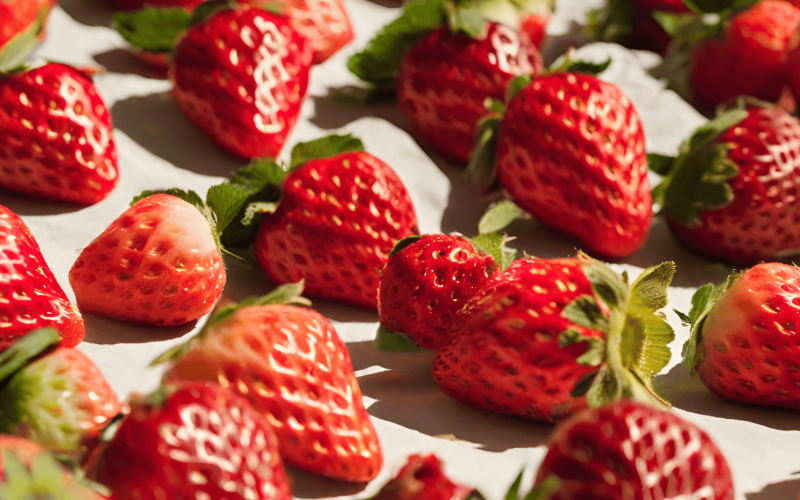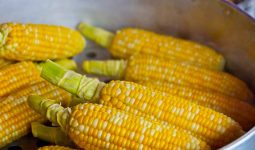The garden strawberry is a popular hybrid species of the genus Fragaria, also known as strawberries, which are planted all over the world for their fruit.
The fruit is well-known for its distinctive aroma, juicy texture, bright red color, and sweetness.
It is widely consumed, either fresh or in prepared meals, such as jam, juice, pies, ice cream, milkshakes, and chocolates.
Strawberry flavorings and scents are also commonly utilized in a variety of items, including confectionery, soap, lip gloss, perfume, and many others.
In the world of berries, strawberries have made their presence known and felt. I am sure you are familiar with the typical strawberry: its red color, green crown, and characteristic taste.
However, there are more types of strawberries than you probably know.
This article will focus on the different types of strawberries and each class’s unique flavor, size, and color, which are among the top.
Here are some other types of strawberries;
1. June-bearing Strawberry
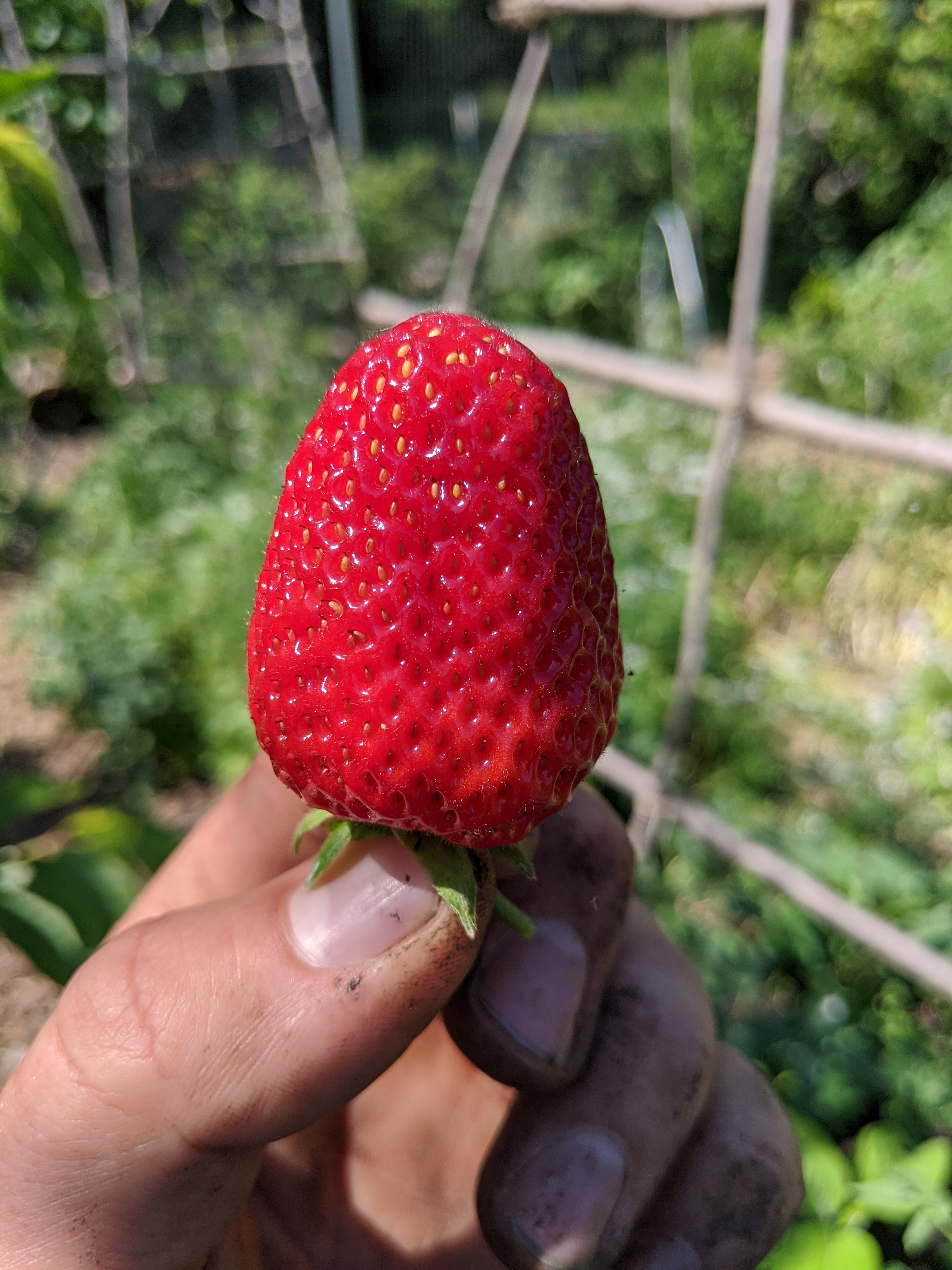
June-bearers tend to yield a large crop of berries over a short period. June-bearing strawberries are a specific strawberry plant that produces a concentrated fruit harvest, typically in June.
However, the timing can vary based on climate and other conditions.
June-bearing strawberries are known for producing a large crop of berries in a relatively short period, usually around June. The harvest season can last for about two to four weeks.
These strawberry plants typically produce a burst of runners (stolons) during the growing season, resulting in daughter plants spreading around the main mother plant.
In terms of size, June-bearing strawberries often yield larger berries than other strawberries.
Furthermore, the flavor of June-bearing strawberries is highly prized, offering a sweet and juicy taste.
June-bearing strawberries are in popular Chandler, Jewel, and Earliglow varieties.
June-bearing strawberries are versatile and can be enjoyed fresh, added to salads, used in desserts, or processed into jams and preserves. They are also suitable for freezing.
2. Everbearing Strawberry
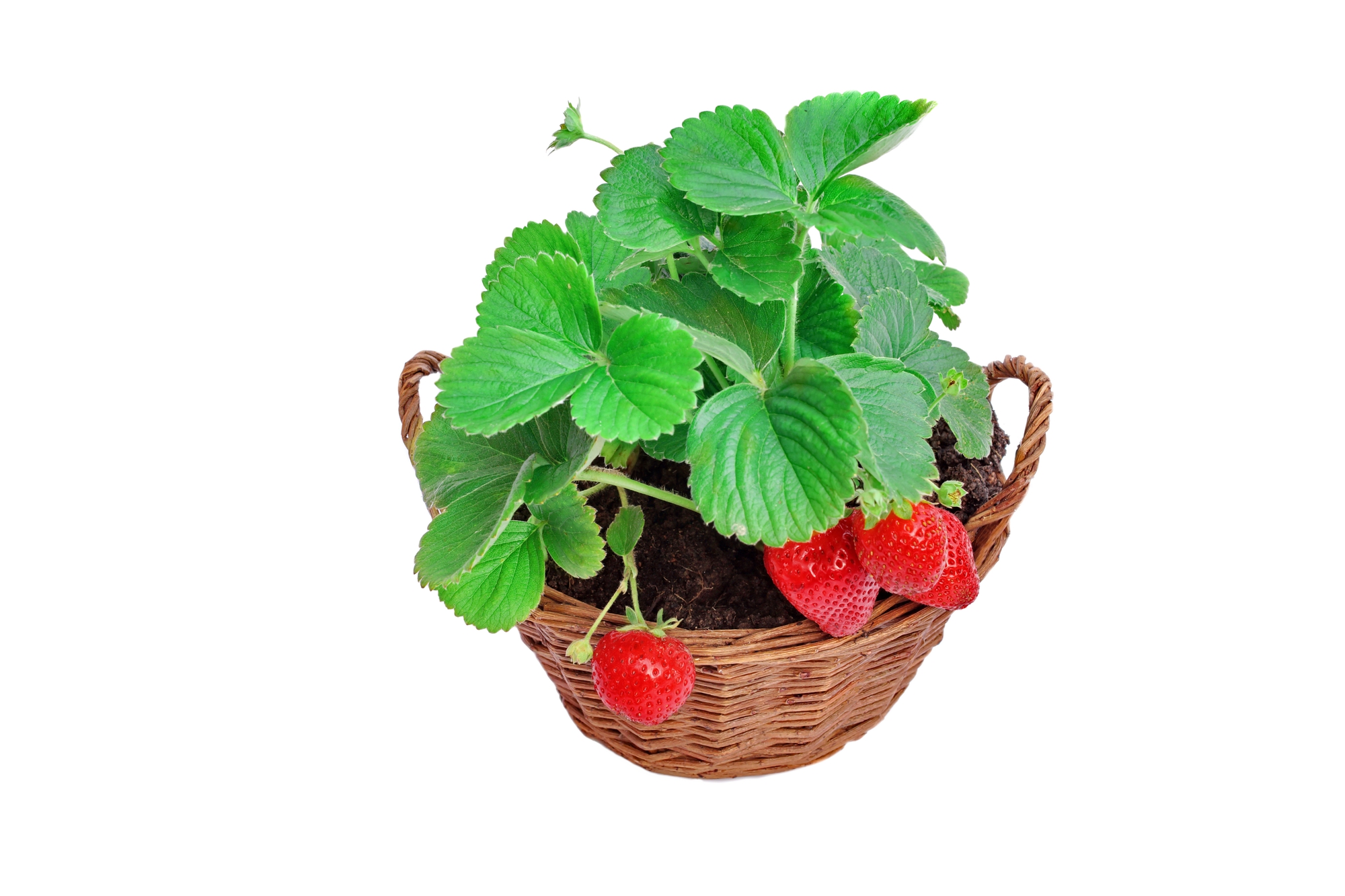
Another one of the different types of strawberries is the everbearing strawberries.
As its name implies, everbearers produce multiple crops throughout the growing season. They are very similar to the day-neutral strawberries.
Unlike June-bearing varieties that typically have a concentrated harvest in June, everbearers can yield fruit continuously from late spring to early fall.
Everbearing strawberries are also unique among the different strawberries because they are less influenced by day length, allowing them to initiate flowering and fruit development regardless of day length. This characteristic enables them to produce fruit consistently.
Regarding the size of the harvest, the individual crops may be smaller than the concentrated harvest of June-bearing varieties.
Everbearing strawberry plants also have fewer runners (stolons) than June-bearing varieties.
Another characteristic of the everbearing is that they generally offer a sweet and juicy flavor similar to the June-bearing varieties. However, the exact taste can vary among different cultivars.
Popular varieties of everbearing strawberries include Albion, Seascape, and Tristar.
Furthermore, some everbearing types exhibit good cold tolerance, allowing them to be grown in various climates.
Everbearing strawberries are versatile and can be enjoyed fresh, used in salads, incorporated into desserts, or processed into jams and preserves. They are also suitable for freezing.
3. Alpine Strawberry

Alpine strawberries, also regarded as woodland strawberries, are another popular type of strawberry.
They are notably small, typically about the size of a dime or slightly larger.
The berries are round or conical and come in various colors, including red, white, and yellow, depending on the cultivar.
Alpine strawberries are known for their intense and sweet flavor. They often have a complex taste, combining sweetness with a hint of tartness, and their aroma adds to the overall sensory experience.
The plants of alpine strawberries are low-growing and form compact mounds.
They produce trifoliate leaves (divided into three leaflets) and delicate white or pink flowers. Runners (stolons) may be present, spreading the plants across the ground.
Alpine strawberries are native to mountainous regions and cultivated in gardens and containers. They thrive in well-draining soil and are well-suited for rock gardens.
Furthermore, Alpine strawberries generally produce fruit in late spring to early summer, depending on the distinct cultivar and local climate.
Alpine strawberries are enjoyed fresh, and their small size makes them a delightful addition to salads, desserts, or garnish. They are also used in jams, syrups, and other culinary creations.
Beyond their culinary uses, alpine strawberries are appreciated as one of the different types of strawberries for their ornamental value.
The compact, mounding habit and delicate flowers make them attractive to garden landscapes.
Alpine strawberries are suitable for home gardens and container gardening.
They can be grown from seeds or propagated through runners. They are often chosen for their ornamental value and edible fruit.
There are several varieties of alpine strawberries, each with its unique characteristics. Common types include ‘Alexandria,’ ‘Mignonette,’ and ‘Yellow Wonder.
4. Hood Strawberry
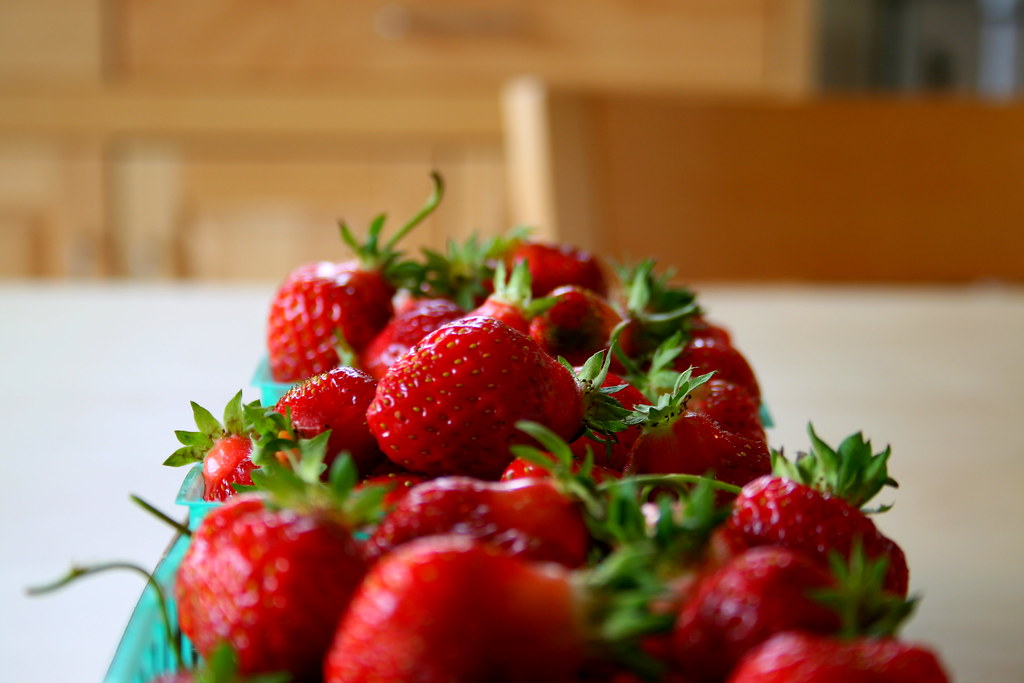
Hood strawberries are also known as Hood River strawberries. They are a specific variety of June-bearing strawberries highly regarded for their excellent flavor and often grown in the Pacific Northwest.
Hood strawberries are classified as June-bearing, meaning they typically produce a concentrated fruit harvest during the early summer months, primarily in June.
Hood strawberries are known for their large size. The berries are particularly plump and juicy, contributing to their popularity.
One of the standout features of Hood strawberries is their exceptional flavor.
They are often described as having a rich, sweet taste with a hint of tartness. Hood strawberries are also noted for their intense and pleasing aroma.
The combination of aroma and flavor makes them a favorite among strawberry enthusiasts.
Hood strawberry plants are vigorous and can produce many runners (stolons). This characteristic can result in a more expansive strawberry patch over time.
While Hood strawberries are often enjoyed fresh, their exceptional flavor makes them suitable for various culinary applications, including desserts, jams, and preserves.
Due to their outstanding flavor and size, Hood strawberries are also grown commercially, providing local markets and consumers with a premium variety.
5. Seascape Strawberry
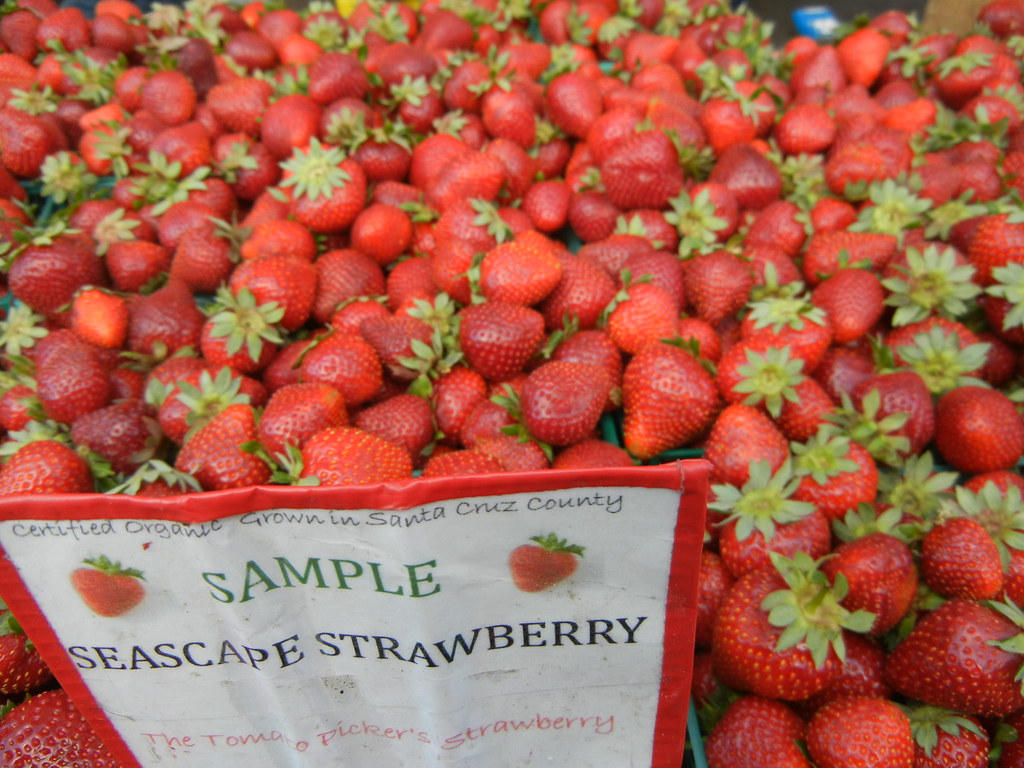
Seascape strawberries are a popular variety known for their day-neutral or everbearing nature, producing fruit consistently throughout the growing season.
The berries of Seascape strawberries are typically medium to large. They offer a good balance of sweetness and juiciness.
Seascape strawberries are one of the different types known for their sweet and flavorful taste. Their pleasing flavor makes them suitable for various culinary uses.
Seascape strawberries are versatile and can be enjoyed fresh, used in salads and desserts, or made into jams and preserves.
Their continuous fruiting makes them a reliable source of homegrown strawberries. You should note that Seascape strawberries are also grown commercially.
The plants of Seascape strawberries are known for their vigorous growth and the production of runners (stolons).
Like in the case of Hood strawberries, this can result in a spreading strawberry patch over time.
Seascape strawberries exhibit good cold tolerance, allowing them to be grown in various climates.
To cultivate Seascape strawberries successfully, provide well-draining soil, ample sunlight, and proper spacing.
Regular watering and maintenance contribute to healthy plant growth and optimal fruit production.
6. Chandler Strawberry
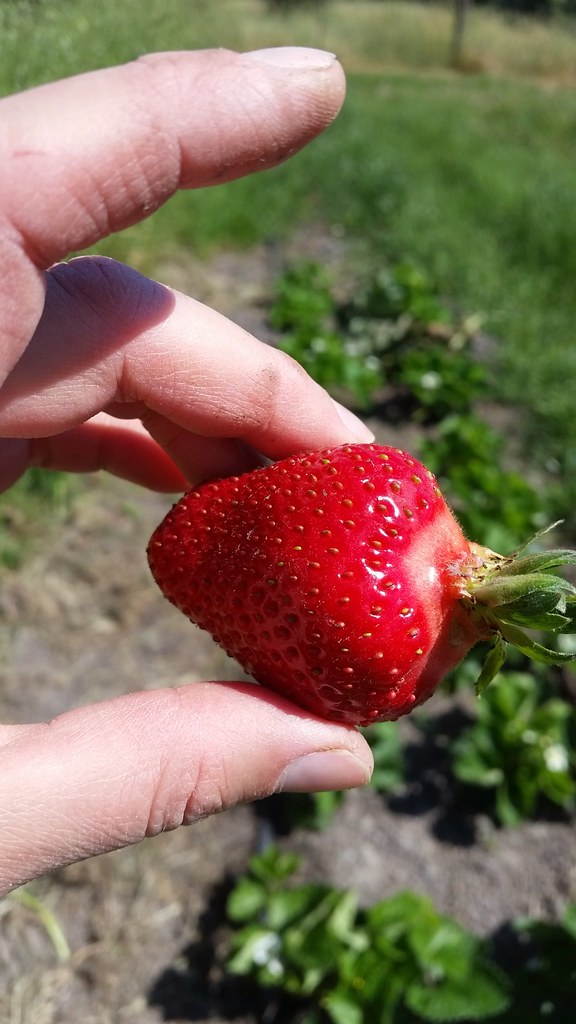
Chandler strawberries are a widely grown variety of June-bearing strawberries, celebrated for their large size, vibrant red color, and sweet flavor.
The berries are known for being particularly plump and substantial compared to some other strawberry varieties.
Chandler strawberries are praised for their sweet and juicy taste. The combination of size and sweetness makes them a popular choice for fresh eating.
Chandler strawberry plants are vigorous and produce numerous runners (stolons).
This characteristic can also result in a more expansive strawberry patch over time.
To cultivate Chandler strawberries successfully, provide well-draining soil, ample sunlight, and proper spacing.
Adequate water and regular maintenance contribute to healthy plant growth and optimal fruit production.
Chandler strawberries exhibit good resilience to certain diseases, contributing to their overall hardiness and putting them above other different types of strawberries.
Chandler strawberries are versatile and can be used in a range of dishes.
They add flavor and visual appeal, whether sliced on top of cereal, added to fruit salads, or incorporated into desserts.
7. Quinault Strawberry
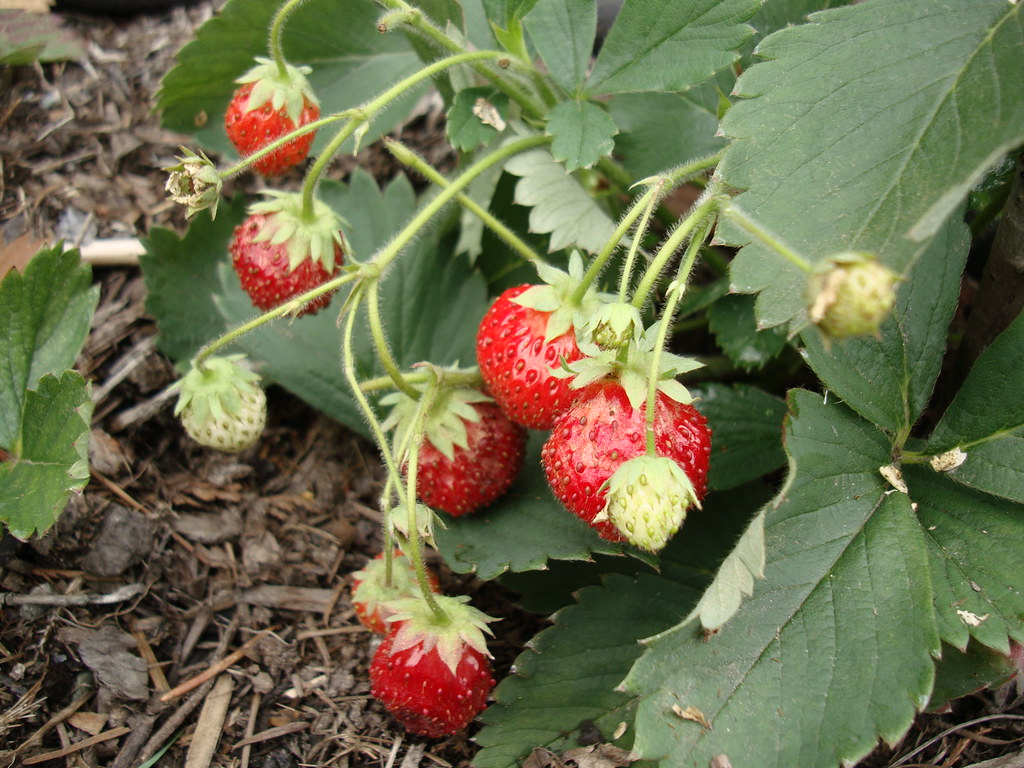
Quinault strawberries are a widespread variety of everbearing strawberries known for their sweet flavor and consistent fruit production throughout the growing season (produce fruit from late spring to early fall).
The berries of Quinault strawberries are typically medium-sized. While smaller than some June-bearing varieties, they offer a good balance of size and sweetness.
Quinault strawberries are well-known among the different types of strawberries for their sweet and juicy flavor.
The plants of Quinault strawberries have a more compact growth habit than some other everbearing varieties.
They produce fewer runners, producing a neater and more contained strawberry patch.
Furthermore, Quinault strawberries exhibit good cold tolerance, making them suitable for cultivation in various climates.
Quinault strawberries are versatile and can be used in fresh fruit salads, desserts, jams, and more.
They are well-suited for those who want a continuous supply of homegrown strawberries.
Quinault strawberries require well-draining soil, ample sunlight, and proper spacing for optimal growth.
Regular watering and maintenance contribute to healthy plants and abundant fruit production.
Quinault strawberries are also known for their resistance to certain diseases, contributing to their overall hardiness.
8. Mara des Bois Strawberry
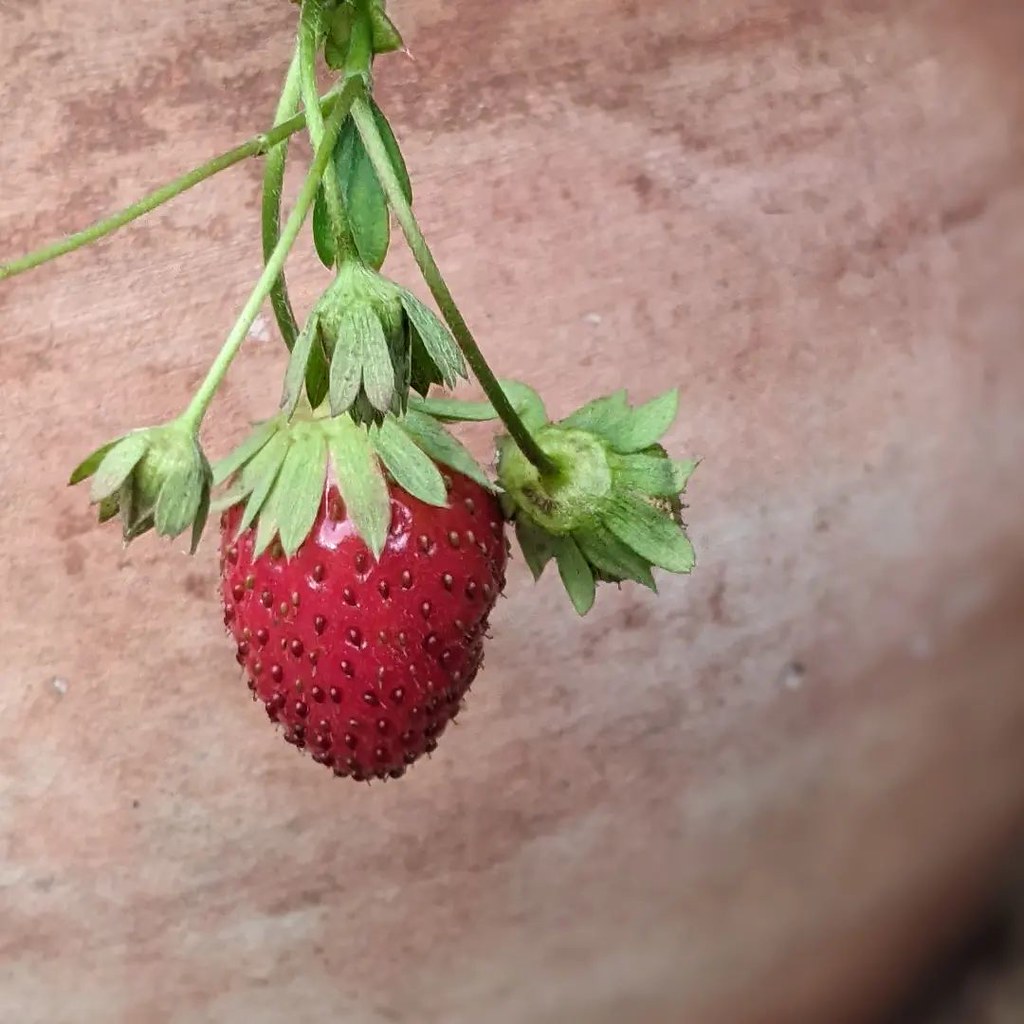
Mara des Bois strawberries are a unique and gourmet variety known for their exceptional flavor.
They are typically day-neutral or everbearing, meaning they can produce fruit continuously throughout the growing season.
This allows for an extended harvest period compared to traditional June-bearing varieties.
The berries of Mara des Bois strawberries are medium-sized, falling between the smaller wild strawberries and larger cultivated varieties. They are known for their uniform and attractive appearance.
One of the most distinctive features of Mara des Bois strawberries as one of the different types of strawberries is their exceptional flavor.
They are often described as having a complex and intense taste that combines sweetness with a hint of tartness.
The flavor is sometimes likened to a combination of wild and traditional strawberry tastes. Mara des Bois strawberries are also prized for their strong and sweet aroma.
The plants of Mara des Bois strawberries are relatively compact, making them suitable for both garden beds and containers.
They produce runners (stolons) but in a more restrained manner compared to some other varieties.
Growing Mara des Bois strawberries requires well-draining soil, ample sunlight, and proper spacing.
Regular watering and maintenance contribute to healthy plant growth and optimal fruit production.
Additionally, Mara des Bois strawberries are often enjoyed fresh. They are also used in various culinary applications, including desserts, salads, and as a topping for dishes.
Mara des Bois strawberries originated in France and gained popularity for their unique flavor.
A breeder named Jacques Marionnet developed Mara des Bois strawberries in the late 20th century.
9. Ozark Beauty Strawberry
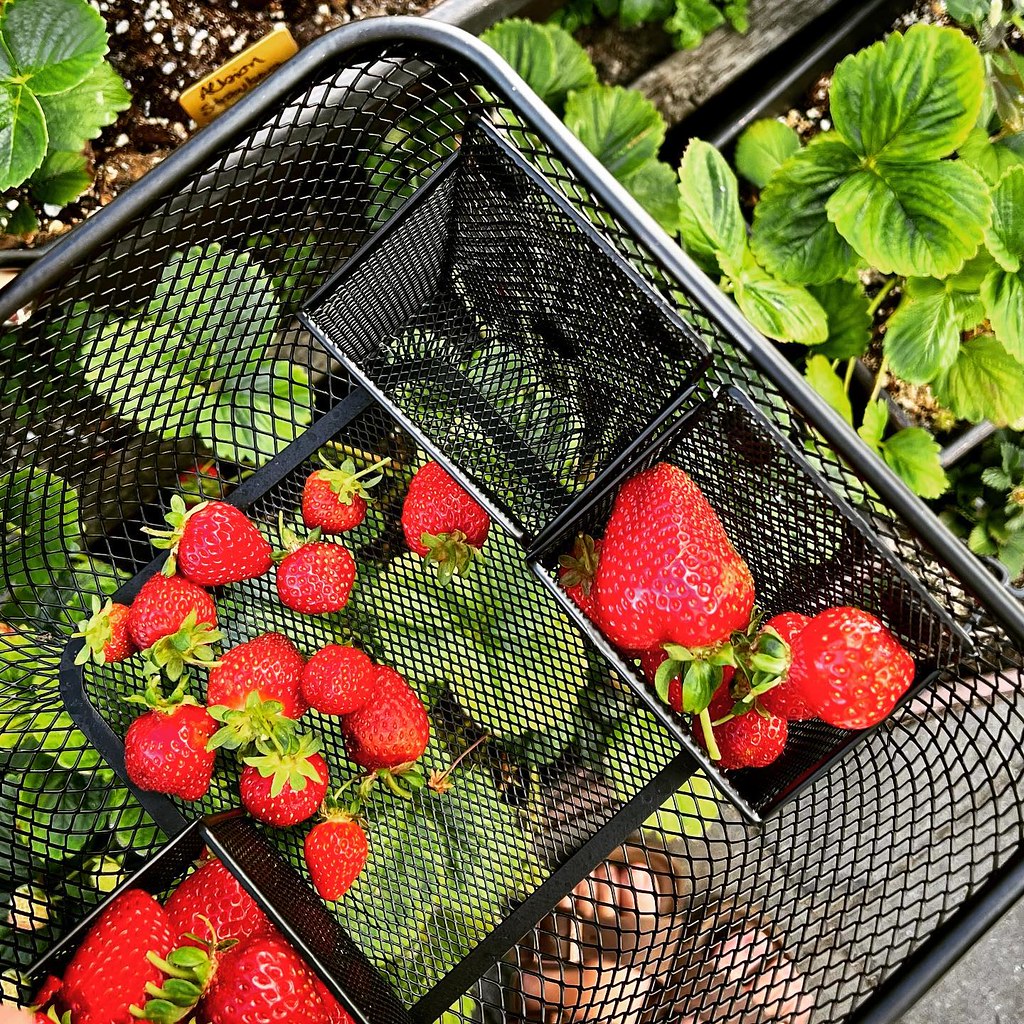
Ozark Beauty strawberries are another popular type of strawberry.
They are classified as June-bearing. The berries of Ozark Beauty strawberries are medium to large.
They are known for their attractive appearance, vibrant red color, and classic strawberry shape.
Ozark Beauty strawberries are valued for their sweet and traditional strawberry flavor.
The combination of sweetness and juiciness makes them appealing for fresh eating.
The plants of Ozark Beauty strawberries are vigorous and produce many runners (stolons).
To cultivate Ozark Beauty strawberries successfully, provide well-draining soil, ample sunlight, and proper spacing.
Regular watering and maintenance contribute to healthy plant growth and optimal fruit production.
Furthermore, Ozark Beauty strawberries are known for having good cold tolerance, making them suitable for cultivation in various climates.
In this article, you have learned about some of the different types of strawberries.
These varieties showcase the diversity of strawberries, offering different flavors, sizes, and growing characteristics.
When selecting strawberries, consider your local climate, growing conditions, and personal taste preferences to find the perfect variety for your garden or culinary endeavors.




